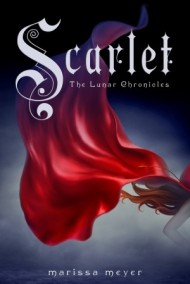Skeleton Key
Artist: Derek Newman-Stille
Fairy Tale: Bluebeard
Media: Acrylic on canvas, yarn, metal keys, skull beads, glass, plastic halloween decorations, and paper.

Bluebeard, the fairy tale most famously written about by Charles Perrault, is a gothic tale of the disempowerment of women and spousal abuse.
In the tale, the aristocratic Bluebeard asks to marry one of his neighbour’s children, but all of the girls except for one reacts in horror at the man’s unusual beard colour. The youngest girl agrees to marry him and goes to live with him.
Bluebeard gives his new bride a set of keys to every room in the house except for one door. He then leaves the house and his wife is overcome by curiosity and ventures into the room. Inside she discovers that the room is filled with blood and that Bluebeard’s first wives have been murdered and left in the room. She gasps in horror and drops the key.
The key becomes stained with blood and when Bluebeard comes home, he finds her with the blood-covered key and attempts to kill her for discovering his secret. She is able to delay him until her brothers can arrive and kill Bluebeard.
What has often struck me as confusing about this tale is the horror that is evoked by Bluebeard’s blue beard. It confused me that so much horror could come from a beard that was of a cheery colour. Yet, the whole tale is horrific. My Bluebeard mixed media piece plays with the alternation of cheer and macabre.
I chose to highlight the joyous quality that I imagined in Bluebeard’s beard by creating his hair from spirals of yarn. The yarn itself was a variegated blue, allowing for the flow of light blue colours into darker blue. In order to highlight the fantastic nature of his beard, I interspersed beads, glass pebbles, and buttons. These provided some texture that took away from the simplicity of the hair. In order to add a macabre quality to the fantasy of his hair, I included metal skulls to underscore Bluebeard’s murderous qualities.
The figure of the key is central to the Bluebeard story, and the key here symbolizes domesticity and, particularly the domestic confinement of women. It denotes the separation of male and female space in the home and, particularly, ideas of privacy and secrecy. In order to accentuate this idea of domestic control and domestic violence, I mix keys and skulls into his beard and hair. His ideas of domestic control are linked to his violence.
I use a large key at the bottom of the canvas, bleeding off of the edge, bridging the boundaries between the frame of the canvas and the external world. This is meant to illustrate the key’s power to bridge liminal spaces, between one space and the next. Similarly, the skeletons at the bottom of the painting denote another form of liminal boundary crossing, bleeding off of the canvas to denote the bridging of the space between life and death. The skeletal image is also conveyed in the rib cage subtending the key. This combination brings attention to the idea of the skeleton key, but it also plays with the idea of the cage, the confinement and the idea of the rib cage.
The yarn of Bluebeard’s beard constructs a heart-like shape with skeletons interwoven into the heart, illustrating the idea that Bluebeard’s corrupt ideas of love are polluted with violence and decay. Yarn also comes off of the heart to create nooses around the two skeletons, creating a sense of Bluebeard’s love as strangling, choking and linked to the death of his first wives.
Body and place are intertwined in this image, interweaving house and body through the repetition of keys. Bluebeard becomes the confining house, tangled with problems and threats.
Domestic violence is a terrifying reality of our lives and my hope in depicting the innocent blue colour with the macabre skulls is meant to bring attention to the way that people often do not believe that certain people can be abusers because they “look innocent” or “seem like a nice guy”. This painting is meant to be a reminder that abuse often masks itself as innocence.
The keys in this image connect to the original myth, but also denote the idea of the secrecy surrounding domestic assault by the abuser, the people being abused, and the surrounding neighbours who are aware of what is occurring and say nothing.


